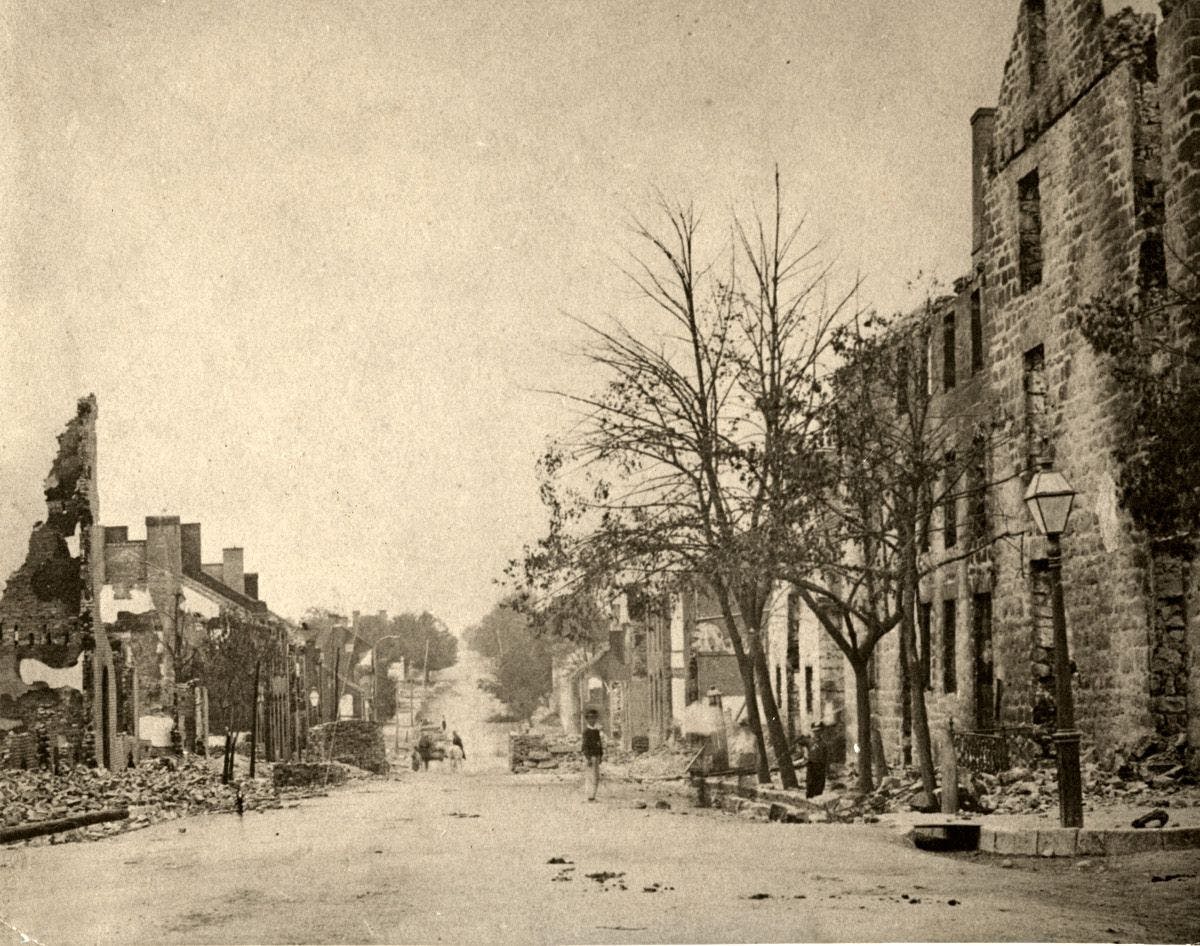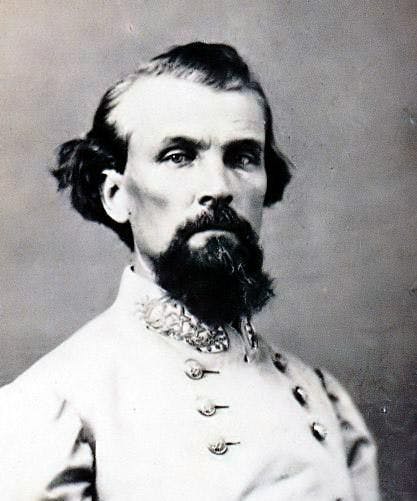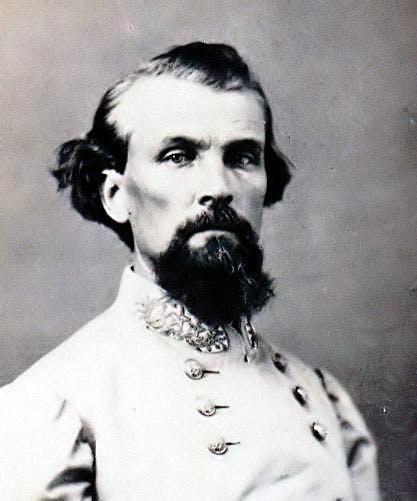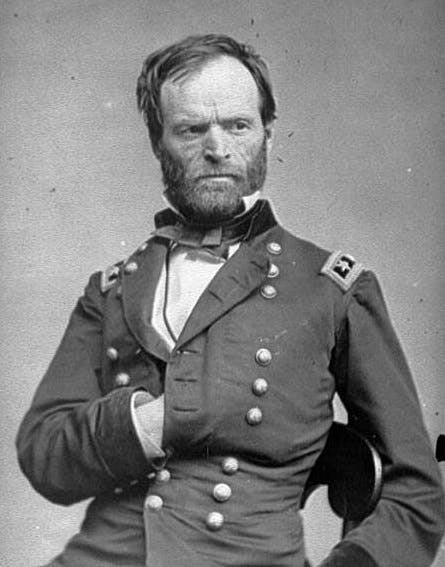Discover Portraits of Blue & Grey: The Biographical Civil War Podcast
Portraits of Blue & Grey: The Biographical Civil War Podcast

Portraits of Blue & Grey: The Biographical Civil War Podcast
Author: Recorded History Podcast Network
Subscribed: 362Played: 8,084Subscribe
Share
© Copyright 2017 Christopher R. Moore. All rights reserved.
Description
Portraits of Blue & Grey, hosted by Christopher Moore, is a biographical Civil War podcast that examines the lives of the most prominent, interesting, and influential figures of the United States Civil War Era.
39 Episodes
Reverse
This episode surveys Civil War intelligence-gathering and espionage on the Confederate side. We look at the cavalry's role, the Confederate Signal Corps and Secret Service, and introduce a few Rebel spy stories. Part 2 will examine some of the best-known Confederate spies and a few of the strange operations pursued by the Rebel Secret Service.
In this Episode:
12:10 - Jedidiah Hotchkiss, Shenandoah Valley Cartographer
16:30 - Confederate spy Antonia Ford
21:30 - Union General Grenville Dodge, Grant's spy master
24:00 - Sam Davis, the South's Nathan Hale
29:45 - Will Talbot, Virginia cavalryman caught spying in Maryland
31:10 - Frank Stringfellow, top-gun Confederate spy
41:30 - The Iron Scouts and the Beefsteak Raid
47:00 - Confederate Secret Service
53:45 - UK blockade policy
59:20 - Confederate Signal Corps; encryption
1:03:00 - George "Lightning" Ellsworth, Rebel telegraph trickster
Email the show at CivilWarPodcast@protonmail.com. Thanks for listening!
Learn more about your ad choices. Visit podcastchoices.com/adchoices
President Lincoln called them "fire in the rear." Northern anti-war Democrats--called Copperheads--advocated for a peaceful resolution of the war and sharply criticized the Lincoln Administration's restrictions on civil liberties in the North. This episode explores the Copperhead movement, introduces a few prominent Copperheads, and evaluates their arguments against Lincoln and the war.
11:00 - Copperheads in the Press.
16:00 - Marcus "Brick" Pomeroy.
29:00 - Copperheads in Politics; Ohio Rep. Clement Vallandigham.
34:00 - Ohio Rep. Alexander Long; Censure and Expulsion in the House of Representatives.
44:00 - Indiana Rep. Daniel Voorhees.
50:00 - NY Mayor and House Rep. Fernando Wood; NY Police Riot.
59:00 - NYC Secession?
1:04:00 - 1864 Democratic Party Convention.
1:10:00 - Lincoln Administration Constitutional Restrictions; Suspension of Habeas Corpus; Martial Law; 1st Amendment Violations.
1:24:00 - Knights of the Golden Circle.
Thanks for listening!
Learn more about your ad choices. Visit podcastchoices.com/adchoices
This is the second half of our look at Union intelligence operations and spies during the American Civil War. This episode finishes up the discussion of Col. George Sharpe's Bureau of Military Information and the big influence Col. Sharpe had on intelligence during and after the war. We then introduce several charismatic Union spies--including Richmond socialite Elizabeth Van Lew, former slave Mary Bowser, actress Pauline Cushman, and Canadian master of disguise Sarah Edmonds. We also meet "the Tsar of the Underground"--counter-intelligence specialist Lafayette Baker--and explore his role in the Lincoln assassination.
Learn more about your ad choices. Visit podcastchoices.com/adchoices
This episode explores Civil War espionage, starting with the intelligence operation and spies on the Union side. Allan Pinkerton, Kate Warne, Timothy Webster, and Col. George Sharpe feature prominently in this episode. A follow-up episode will be out soon finishing up our look at Union spies with figures like Elizabeth Van Lew, Lafayette Baker, Mary Richards Bowser, Pauline Cushman, and Sarah Emma Edmonds.
A future show will discuss Civil War spies on the Confederate side.
Thanks for listening!
Learn more about your ad choices. Visit podcastchoices.com/adchoices
The third (and final) episode of our series on the Red River Campaign finishes up the action in Louisiana. We look at the Union withdrawal, an unorthodox cavalry-vs-navy battle at Blair's Landing, the Camden Expedition, and some nifty impromptu dam-building by a Wisconsin engineer named Lt. Col. Joseph Bailey.
Learn more about your ad choices. Visit podcastchoices.com/adchoices
Part 2 of the Red River Campaign explores the Battle of Mansfield and follow-up Battle of Pleasant Hill--which proved to be the pivotal confrontations of the campaign. Then, we digress into some Civil War trivia.
Look for Part 3, which will wrap up the series, in the near future.
Learn more about your ad choices. Visit podcastchoices.com/adchoices
Part 1 of our Red River Campaign episode explores the dichotomy between political generals and hard-nosed professional soldiers before surveying American Civil War action in Louisiana. We also get to meet Union General (and former Speaker of the House) Nathaniel Banks and U.S. Navy hero Admiral David Dixon Porter--along with Rebel Generals Richard Taylor and Kirby Smith.
Learn more about your ad choices. Visit podcastchoices.com/adchoices
Portraits of Blue & Grey makes its triumphant return with a look at the New Mexico Campaign's good intentions, bad logistics, and ugly results. While we're at it, we'll explore civil war in Ol' Mexico, Napoleon III's imperialist opportunism, and figure out how a Habsburg archduke briefly became Emperor of Mexico.
"General Sibley. He looks dead." I definitely should have re-watched the movie before recording the episode.
If you have questions or comments about the show, you can reach us at blueandgreypodcast@gmail.com.
Thanks for listening!
Learn more about your ad choices. Visit podcastchoices.com/adchoices
In this episode, we start with what was supposed to be a short discussion of the James Gang--particularly their involvement in the Missouri guerilla fighting. Then, we look at one of the most unusual happenings of the Civil War: the Confederate raid on the sleepy town of St. Albans, Vermont. As Civil War raids go, though, the St. Albans Raid stands out. And not so much because of the setting but because the purpose of the raid was good, ol' fashioned bank robbery.
Learn more about your ad choices. Visit podcastchoices.com/adchoices
By early 1864, POW populations in Civil War prison camps had exploded, and conditions in the camps were abysmal. In an attempt to liberate captured Union soldiers held at nearby Belle Isle prison, Gen. Judson Kilpatrick and Col. Ulric Dahlgren plan a daring raid on Richmond. When the raid doesn't go as planned, suspected ulterior objectives lead to the Dahlgren Affair -- one of the most enduring controversies of the Civil War.
Historians still debate whether the Dahlgren Affair was a sinister, under-handed plot or a U.S. Civil War version of a false-flag operation. The truth remains a mystery, but we'll do our best to get to the bottom of it in this episode of Portraits of Blue & Grey.
Learn more about your ad choices. Visit podcastchoices.com/adchoices
Part B takes us through the end of the short life of rebel cavalier Jeb Stuart. Then, Chambersburg meets its unfortunate fate, courtesy of Jubal Early.
Learn more about your ad choices. Visit podcastchoices.com/adchoices
For the most part, towns north of the Mason-Dixon line sustained a lot less damage during the Civil War than their counterparts down South. Chambersburg, Pennsylvania, though, may be the single most glaring exception. Jeb Stuart paid a visit in 1862 and was a fairly polite guest, as military occupiers go--even taking the time to sign the guestbook at the small town's most high-brow hotel. But when Jubal Early's men came calling two years later, the stay was much less cordial.
In Part A of Raiders of the Lost Cause, we get acquainted with James Ewell Brown ("JEB") Stuart--one of the war's most colorful figures. Then, we follow Stuart through his 1862 Chambersburg visit. In Part B (coming soon!), we'll take a look at the experience of poor Chambersburg, PA, for the remainder of the way.
The next few episodes will focus on famous, interesting, and entertaining raids of the Civil War. Look for future shows on (in no particular order) Grierson's Raid, the Dahlgren Affair, the St. Albans Raid, and maybe something on the sinking of the CSS Albemarle.
Learn more about your ad choices. Visit podcastchoices.com/adchoices
Part 4 of our series on Nathan Bedford Forrest picks back up with Forrest continuing to frustrate William T. Sherman and the series of Union cavaliers dispatched to neutralize him. As Union might becomes overwhelming, Confederate armies are forced to surrender, and the danger of Forrest assuming the role of guerilla leader looms large. Instead, he tries to quietly slip back into the life of a planter and businessman. Along the way, Forrest dips his toes into post-war politics and becomes the first "Grand Wizard" of the Ku Klux Klan.
You can reach Portraits of Blue & Grey at blueandgreypodcast@gmail.com with questions or comments about the show.
Thanks for listening!
Learn more about your ad choices. Visit podcastchoices.com/adchoices
"His eyes, usually mild in their expression, were blazing with the intense glare of a panther’s springing upon its prey....So fierce did his passion become that he was almost equally dangerous to friend or foe.."
--Major David Kelly, C.S.A.
Part 3 recounts two confrontations with fellow Confederates. First, the killing of Lt. Andrew Gould by his commanding officer, Nathan Bedford Forrest. Though probably self-defense, the incident underscores the centrality of violence in the life of the famed cavalry general. Chickamauga follows, and then Forrest lets Braxton Bragg know how he really feels about him.
The episode concludes with the infamous 'Massacre at Ft. Pillow.' In between, we take a look at Okolona, one of Forrest's most impressive victories.
Learn more about your ad choices. Visit podcastchoices.com/adchoices
In Spring, 1862, Nathan Bedford Forrest's military acumen began to reveal itself, as he became a thorn in the side of Union operations in Tennessee, Mississippi, and Alabama. Part 2 includes Forrest's impressive display of physical courage at Fallen Timbers, a chaotic escape at Parker's Crossroads, and a story of equine heroism at Thompson's Station--before concluding with an in-depth look at the April, 1863, Union mule raid led by Col. Abel Streight and opposed by Forrest's Confederate cavalry.
If you have questions or comments about the show, you can reach us at blueandgreypodcast@gmail.com.
Thanks for listening!
Learn more about your ad choices. Visit podcastchoices.com/adchoices
Nathan Bedford Forrest was perhaps the most despised, though begrudgingly respected, Confederate military leader. After growing up poor on the frontier, Forrest ascended the ranks of Southern society and had amassed considerable wealth by the time the Civil War began in 1861. Although he was involved in numerous business ventures, the bulk of his fortune was derived from the slave trade. When the war began, Forrest's value to the Southern cause was immediately apparent--initially as a recruiter and then as a battlefield commander. In Part 1, we examine Forrest's early life, business ventures, and introduction to military life.
Learn more about your ad choices. Visit podcastchoices.com/adchoices
Sherman's famous March to the Sea is one of the most well-known and noteworthy campaigns of the U.S. Civil War and probably contributed more than anything else to the hatred of Sherman that flourished in the South for 100 years after the war. After capturing Savannah, Sherman turned north, headed for Columbia, SC. Where Savannah survived occupation relatively unscathed, Columbia would not be so lucky. By the time Sherman reunited with Grant, the war was all but over, with only some relatively light mop-up duty left on the agenda.
Sherman played little to no role in Reconstruction, instead moving out west to focus on the Transcontinental Railroad and Indian Wars while in his new position as General of the Army.
If you'd like to reach out to the show, email us at blueandgreypodcast@gmail.com.
Thanks as always for listening, and I hope you enjoy Part 4 of our Portrait of William Tecumseh Sherman.
Learn more about your ad choices. Visit podcastchoices.com/adchoices
After Shiloh, Sherman got the opportunity to try his hand in civic administration as the military governor of Memphis. And it was from Memphis that he embarked on a mission, with good friend U.S. Grant, to solve the riddle that was Vicksburg. After months of frustration, Vicksburg fell in July, 1863. The Sherman - Grant team's next test, which they passed with flying colors, was to save the Army of the Cumberland besieged at Chattanooga. Now commanding Union forces in the West, Sherman then set off on a perilous campaign deep into the heart of Dixie, as he tried to capture Atlanta - and save President Lincoln's hopes for reelection in the process.
Thanks for listening!
Learn more about your ad choices. Visit podcastchoices.com/adchoices
Part 2 of our look at the life of William Tecumseh Sherman begins with Col. Sherman commanding NY volunteers at Manassas. The battle goes poorly for the Union, but Sherman shows strong, earning a promotion to Brigadier and a transfer to Kentucky to serve as second in command to Gen. Robert Anderson. Anderson's health problems leave Sherman in charge in Kentucky, and the resulting stress leads to mental health struggles for Sherman. The press, which Sherman already detests, piles on, and Sherman reaches his lowest point in the war. After a brief leave of absence, Sherman is assigned to serve under soon-to-be rising star Ulysses Grant, beginning a mutually rewarding friendship. After taking Forts Henry and Donelson, Grant and Sherman move to confront the newly consolidated rebel western forces near Corinth, Mississippi. A surprise counter-offensive climaxes in the bloody battle of Shiloh, which redeems Sherman's reputation as a soldier but also foretells the brutality that will come to define the Civil War.
If you have any questions or comments, you can reach the show at blueandgreypodcast@gmail.com. Thanks for listening!
Learn more about your ad choices. Visit podcastchoices.com/adchoices
William Tecumseh Sherman is one of the U.S. Civil War's most controversial figures. A "Fierce Patriot" (in the words of Sherman biographer Robert O'Connell), Sherman deserves more credit for holding the United States together than anyone save Lincoln and Grant. His tactics left the South in smoldering ruins. Yet, in the years leading up to the war he resided in the South, helped to found the Louisiana Military Academy, and sympathized with Southerners politically - except on secession. How could a man who counted dozens of Confederates among his closest friends go on to become the most hated man in the South? Simple, Sherman was a soldier first, and he fought to win. Whether subduing Georgians, Sioux, or Seminoles, Sherman didn't pull punches. In Sherman's mind, War is Hell, and the primary objective is winning quickly and decisively.
In Part 1 of our portrait of William Tecumseh Sherman, we look at 'Cump's childhood, West Point time, early military career, role in the California Gold Rush, and clear-headed predictions about what to expect when the North and South finally came to blows.
If you have any questions or comments about this or any other episode, you can reach Portraits of Blue & Grey at BlueandGreyPodcast@gmail.com. Thanks for listening!
Learn more about your ad choices. Visit podcastchoices.com/adchoices












Looking forward to part 2.
-I learned alot from this detailed Civil War history podcast. So many interesting details that aren't taught in school.